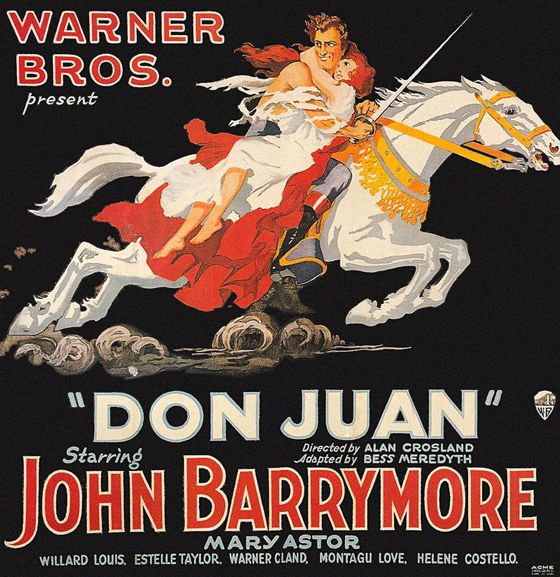
Monthly Archives: September 2011
AN N. C. WYETH FOR TODAY
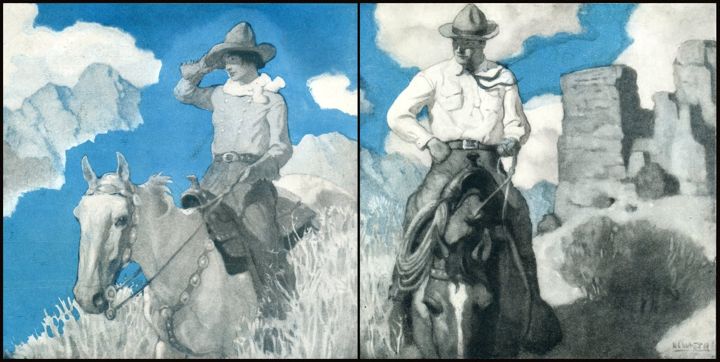
Endpapers, unknown book.
THE KEY TO SUCCESSFUL BEACH PARTYING

No matter how strong the current, no matter how treacherous the sand beneath your feet, keep your beer above water at all times.
ZÉRO DE CONDUITE
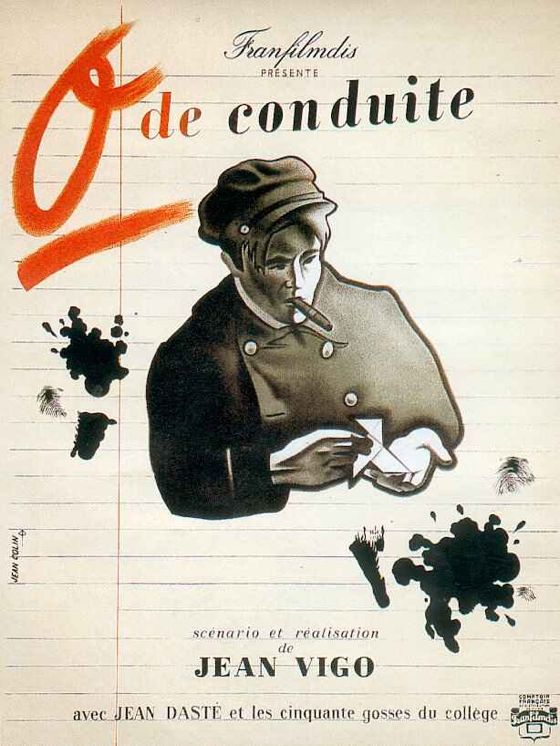
There are quite a number of great films about children, about the world of the child, but Jean Vigo's Zéro de Conduite, from 1933, is the only great film I can think of which feels as though it was made inside the world of the child and smuggled out like contraband past whatever Iron Curtain of time or experience separates adults from that world. It is as though the film was created by a preternaturally intelligent 14 year-old for other preternaturally intelligent 14 year-olds. It's flattering to feel so addressed — like having a 14 year-old punk assume as a matter of course that you will want to join him in vandalizing an abandoned garage. It takes you back — not as the mind takes you back, but as some powerful sense memory does.
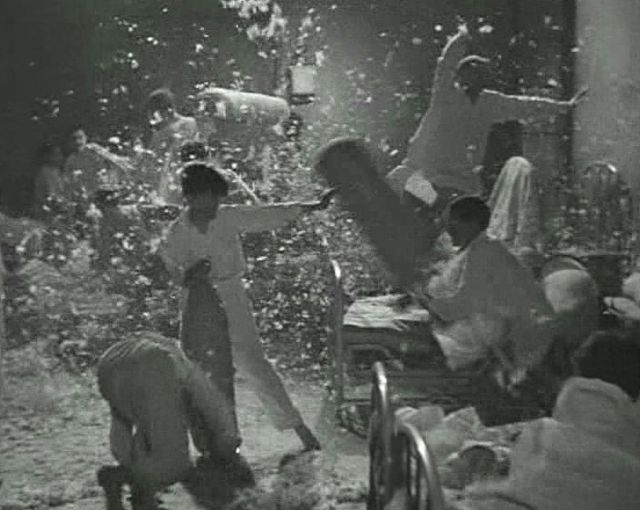
Baudelaire said that genius is the ability to summon back childhood at will, and all art on some level summons us back to childhood, to the vividness and innocence of sensation we associate with childhood, but when an artist depicts childhood itself there is almost always some wistfulness in the process. Bergman's great resurrection of the world of his childhood, Fanny and Alexander, is suffused with a sense of loss, a sense that ghosts are being summoned. Truffaut's Les Quatre Cents Coups, which owes so much to Vigo's film, has another kind of wistfulness, a moral wistfulness, asking us to judge, as adults, the wrongs done to children. When Antoine Doinel looks questioningly, almost accusingly, at the camera at the end, we know it is the world of adults which is being questioned and accused, and has been questioned and accused throughout the film.
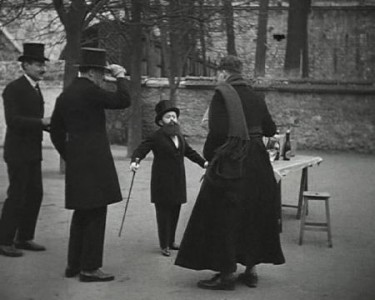
But Zéro de Conduite is perfectly free of wistfulness, and of special pleading. The hatred of unjust or preposterous adults is visceral and without nuance. Vigo was an anarchist by political persuasion but the film is not a manifesto — it expresses in purely emotional terms the way fatuous authority figures made him feel, in his gut. And the high spirits of the kids, their love of disorder and transgression, are mirrored in the way the film is constructed.
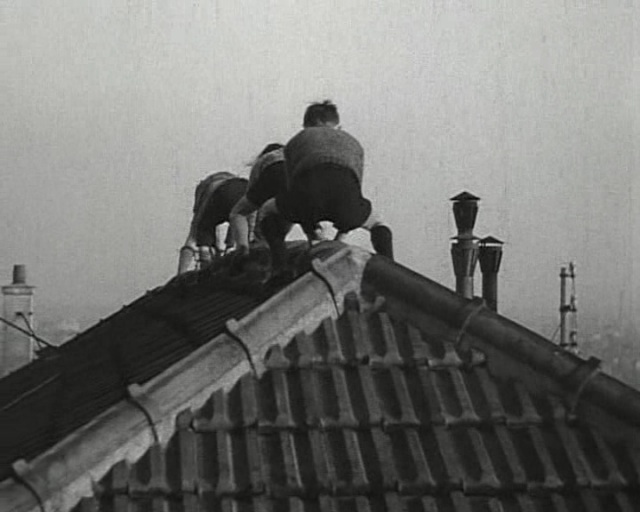
A short episodic narrative about the insurrection of a group of boys at a boarding school, it refuses to stick to one aesthetic strategy. Images with the tone of lyrical documentary give way to dreamlike sequences that seem to record the imaginings of the boys. More or less conventional narrative passages are punctuated by blatant camera tricks, which call up a vision of the filmmaker sticking out his tongue at the audience.
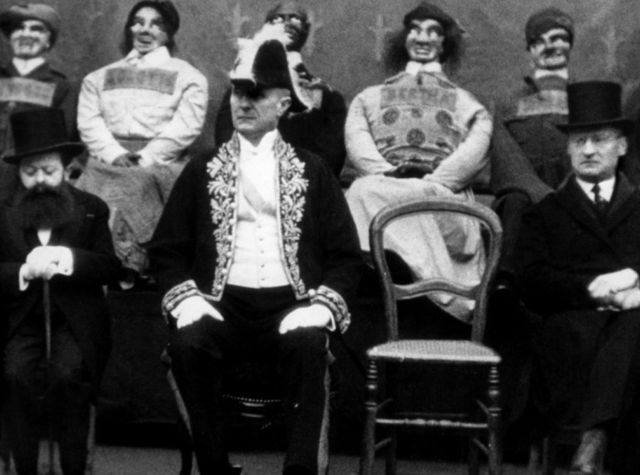
Crude slapstick bits alternate with scenes of victimization suffused with an almost tragic aura. The film moves with the imaginative, nearly chaotic speed — and with the electrifying energy — of a child's mind. The result, however, is not disjointed or disorienting, because the mind driving it is a recognizably coherent mind — just wilder and freer than an adult's mind can often afford to be. In the whole history of cinema there is nothing else quite like it.
CURVE
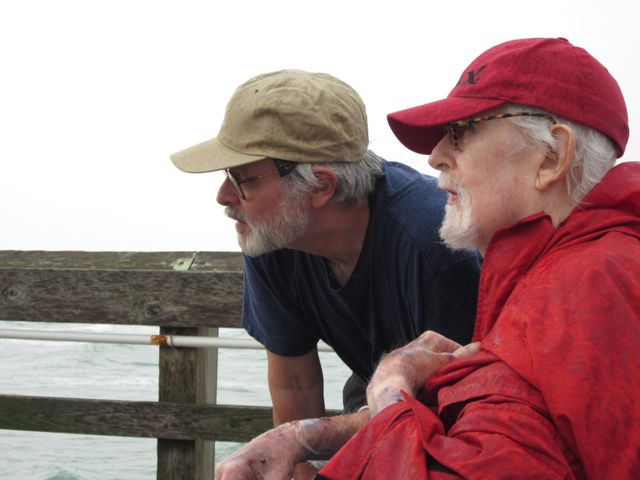
The smell of the Evinrude
Gasoline and oil
The curve of the open wooden boat
The high prow
As his father and his father's friends
Launch it into the surf
Timing the waves to crest them
And they will return with tales
Of the ocean beyond the surf
And fish packed in ice boxes
Which will not quite explain
The beauty of the curve
Of that prow riding the curves
Of those waves, out to open sea
LET THE CHURCH ROLL ON!

[Photo by Les Zahls]
Come worship with us! We have a smoking section, even for children’s Sunday School classes, and serve Rum Cocos at “coffee hour” after each service. Shoes and shirts are optional in warm weather. We preach the Gospel like a punch in the stomach — it’ll knock the wind right out of you!
Be sure to ask about our Wednesday night Texas Hold-’em/Bible fellowship meetings!
“We do church right!”
CUL-DE-SAC
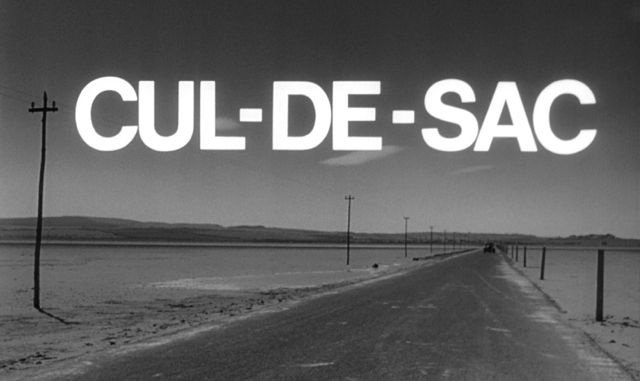
Roman Polanski's 1966 film Cul-de-sac is a slight work — its absurdist nihilism and casual misogyny add up to a fairly puerile vision of the human condition — but it's a wonderfully made film and consistently entertaining. There are hilariously eccentric performances by Lionel Stander and Donald Pleasence and by a fine supporting cast, and the film is beautifully shot in a truly strange location that itself becomes a major character in the tale.
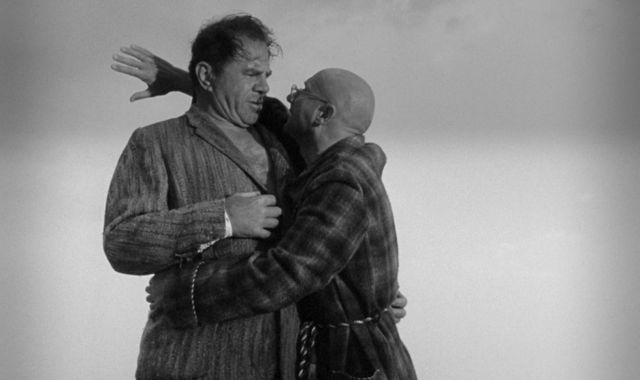
The presence of Françoise Dorléac contributes an unintended poignancy to Cul-de-sac — she would die in an automobile accident a year after the film was released. She doesn't have much of a part — playing the fickle and vapid wife of Pleasence. She takes her clothes off on a regular basis, to remind us that she's the decisive female presence over whom and before whom Stander and Pleasence enact their preposterous duel of wills, but she doesn't seem to have much will of her own. She doesn't help drive the story — she just complicates it and decorates it.
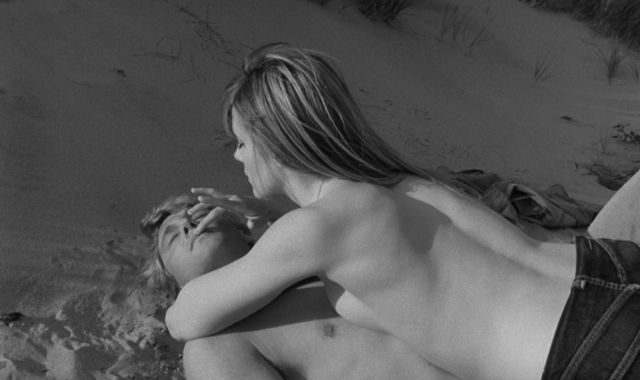
Still, she's so luminously beautiful and fascinating that Polanski can't quite reduce her to feminine inanity — one senses a woman in her who might have given the film real depth and power if Polanski had taken her character a bit more seriously.
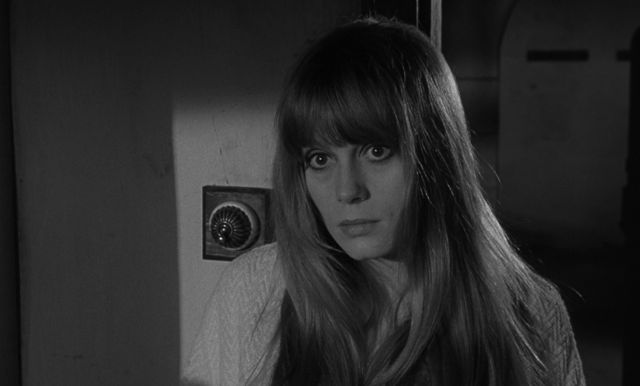
Pleasence's character is apparently haunted by an earlier relationship with an unseen “Agnes”, referenced glancingly here and there but whose name becomes a cry of anguish at the end, a summary of something lost long before the film began. But it's Dorléac's name one wants to speak at the end now — dead at the age of 25, leaving only a modest body of work behind her, some of it quite wonderful. What she might have accomplished in this film, had Polanski's not kept such a pyschic distance from her, becomes a symbol of all the work she might have done had she lived.
À PROPOS DE NICE
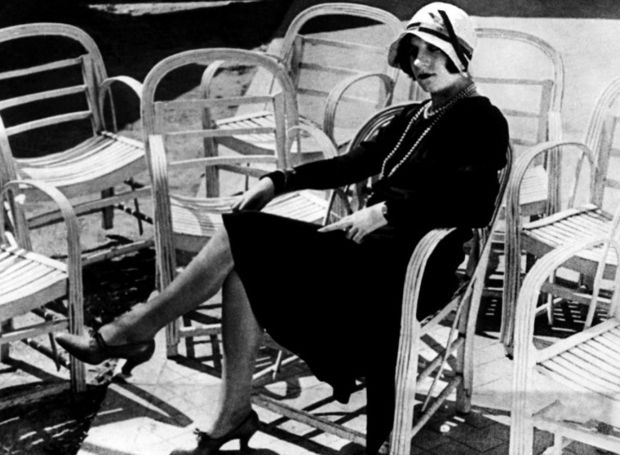
Jean Vigo's first film, the “documentary” À Propos de Nice, from 1930, can certainly be read as a social commentary — indeed, Vigo himself urged viewers to read it as a social commentary. In the French left-wing circles Vigo moved in, documentaries which offered a critique of bourgeois life or a celebration of the proletariat we're more or less de rigeur.
In fact, however, Vigo was hardly a doctrinaire leftist — he was an anarchist, who never joined the Communist party, and would have naturally opposed any system of reform whose results could be anticipated in detail. He believed that extreme freedom would create its own unforeseeable utopias.
More importantly, Vigo was primarily a visual poet. His portrait of Nice connects most directly with the works of his peers who were interested in creating documentary poems about cities, celebrating their energy in lyrical terms — another reason why À Propos de Nice resists a simple political analysis.
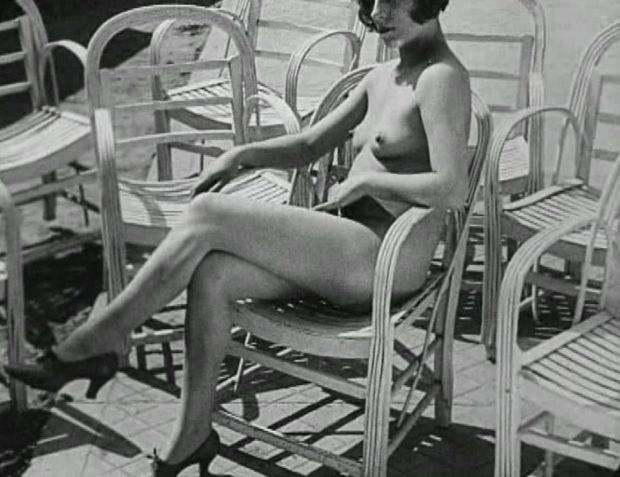
Yes, the film contains ironic and often unflattering images of the idle rich enjoying themselves in a bourgeois playground by the sea — but Vigo seems at least as amused and delighted by these images as appalled. They have the whimsical, endearing, even celebratory quality of Lartigue's photographs of the same class in the same sort of settings. And Vigo's images of the working-class people of Nice utterly lack the heroic quality considered appropriate by more didactic left-wing filmmakers.
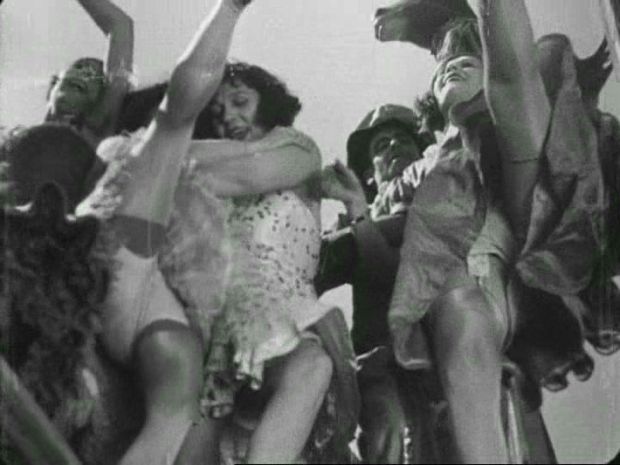
Whatever he thought he was making, Vigo in fact created a unique film that celebrates life, energy, movement. It is a reflection of the joy he took in the world as it was — made poignant by his frail health, and perhaps his own sense that he wouldn't have long to enjoy that world. The film ends with images of mortality — statues in a graveyard, carnival figures consumed by flames. As it was, Vigo died at the age of 29, four years after this film was made.
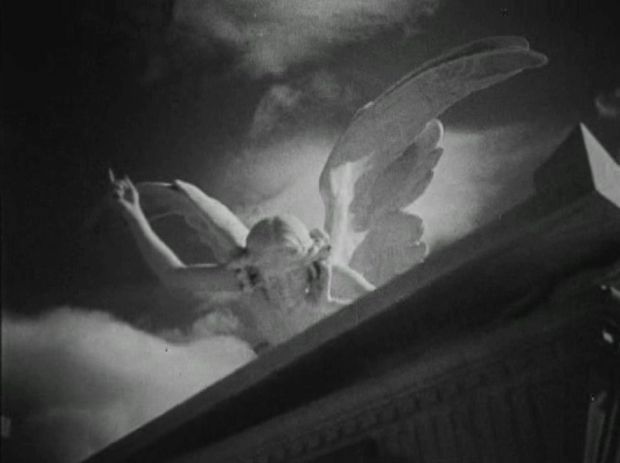
Vigo said that he thought a documentary should reflect not some objective truth about things but a “documented point of view” about things. Ultimately, the documented point of view reflected by À Propos de Nice is simply joy, made sweeter by a sense of the ephemeral nature of joy. The leftist pieties on its surface dissolve into the spirit of the filmmaker — a cheerful, antic, sensual soul, amazed by the world and by what cinema could make of it.
BEATRICE AND BOB

Kendra Elliott's first live-action short, Beatrice and Bob, will have its East Coast premiere at the Woodstock Film Festival on 23 September, with another showing on 24 September:
Screening Times and Tickets
Kendra is a brilliant artist and animator, and a wonderful actor who really helped make Jae Song's Majestic Micro Movie Essays On Cinema special. It will be interesting to see what she does in her first foray into live-action directing.
If you're in the area — check it out!
MAYA IN CHINA!
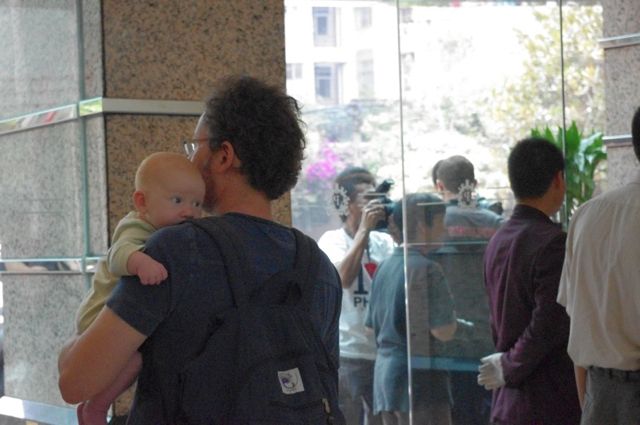
Maya Allison, husband Mark and baby Casimir have arrived in China for a four-month stay, and Maya is recording the adventure on a new blog — with cool pictures:
The Adventures Of Maya, International Mom
Check it out!
ON THE ROAD: PZ PODCASTING

Paul Zahl in the Winter Garden, Florida studio where he records PZ’s Podcast. Here he’s cuing the 100-piece studio orchestra for a dramatic sting to underscore a salient point about the intersection of Protestant theology and the make-up effects of Jack Pierce.
You can listen, free of charge, to all of his podcasts on iTunes.
ON THE ROAD: AMAZONS

My mom, two of her daughters and one of her granddaughters in the “smoking section” of Jebbie's On 17, a great down-home restaurant in Hampstead, North Carolina.
Big Nanny's grip on the nation, even in the red states, has grown tighter since I last crossed the nation by car — you can't even smoke in restaurants in New Orleans these days. Between the Republican totalitarians who want to control our sins and the Democratic totalitarians who want to control our lesser vices, the American strain grows weaker . . .
MY DAD'S SURF-FISHING ROD
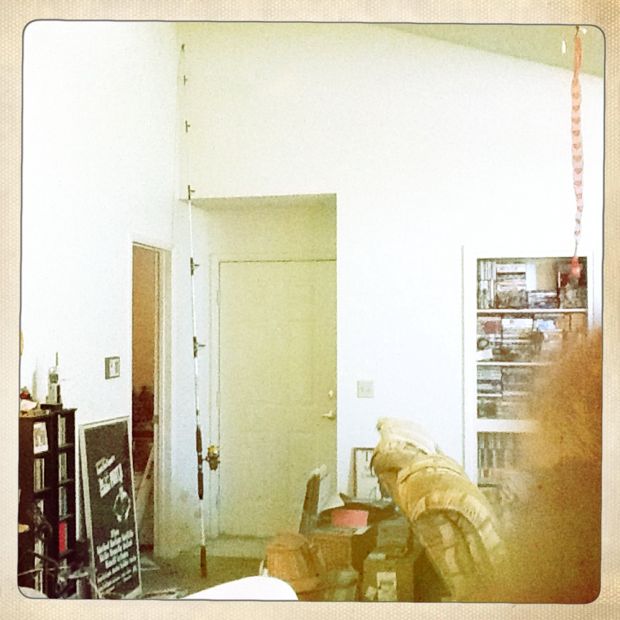
. . . rescued from storage.
I love surf-fishing, especially on the North Carolina coast in the Fall when the blues are running. They are relatively small fish — catching one over 5 pounds is rare, catching one over 10 pounds is extremely rare — but fight furiously when hooked, and taste wonderful when eaten right out of the sea, tending to get too oily and fishy if you try to keep them on ice for a day or two.
Some of my favorite times with my dad were spent surf-fishing, waking up before dawn to catch the right tide, with a Coleman lantern on the beach, baiting hooks with strips of Virginia mullet.
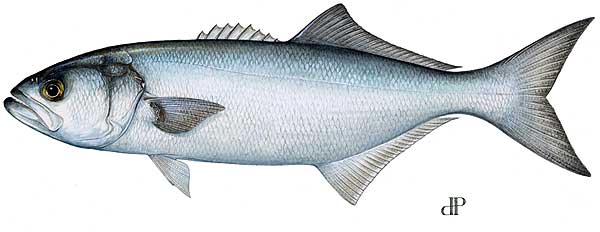
When the blues were running we would catch scores of them, as fast as we could cast our lines into the surf. When they weren't running, we would just stand watching the waves, which has its own pleasures.
I haven't fished in the surf for ages, my dad won't ever do it again — but someday I'll cast a line out with his rod and think of him. He'll be with me.
PANDORA AND THE FLYING DUTCHMAN
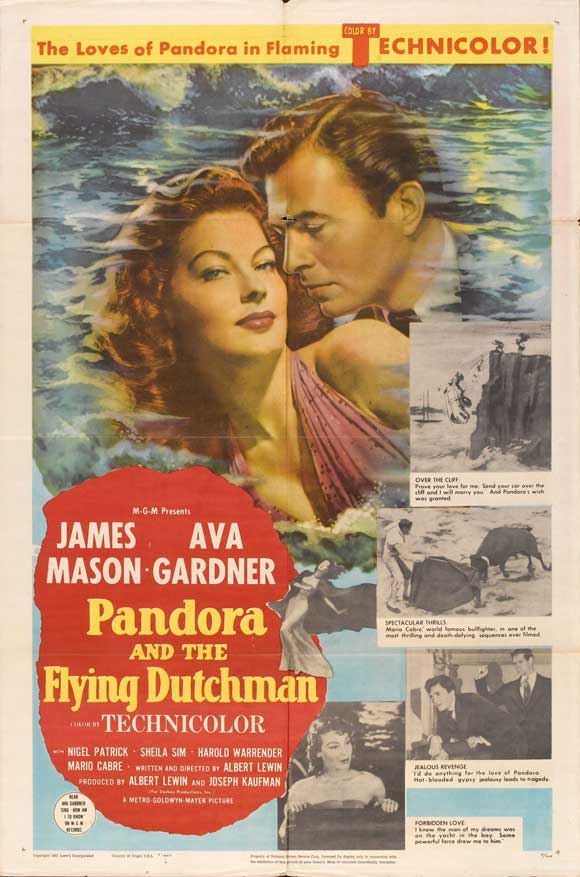
This film is a “mystical” love story — its script is a farrago of flapdoodle and mythological symbolism. It simply can't be taken seriously. And yet, and yet . . .
Its images, created by the great Jack Cardiff, are so lush and beautiful, so seductive, and its story has such oneiric momentum, that one is captivated in spite of oneself. Martin Scorsese has said that watching it is like being drawn in to a strange and wonderful dream, and the stranger it gets, the more convincing it becomes, as often happens with dreams.
It is a movie one inhabits, even if one's sense of good taste and reason urge one to resist it. I can't say that it produces the emotional effects it seems to be trying for, but it's a lovely, delirious vision, and it stays with you long after its narrative evaporates in your mind.
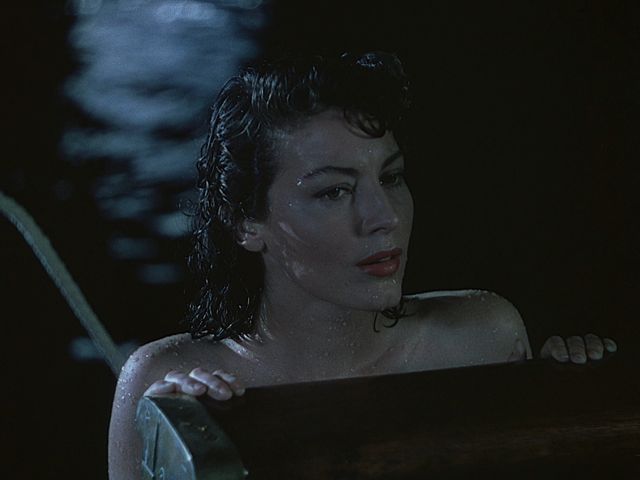
Perhaps it's Ava Gardner who engineers the miracle — unconvincing as a symbolic reincarnation of the mythological Pandora, she is utterly convincing as a mythological creature in her own right, self-contained, potent, invincibly female.
